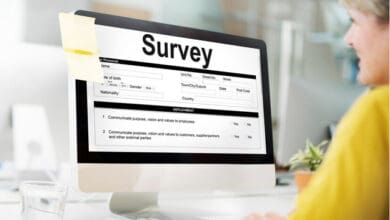
Mobile Device Management is now essential to modern organizational infrastructure due to the growing reliance on smartphones and tablets for everyday business operations. Efficiently handling these devices guarantees data security, boosts productivity, and ensures smooth connectivity.
Implementing MDM is crucial to protect device data and ensure optimal performance. Before delving into its implementation, let’s explore MDM in more detail below.
What is Mobile Device Management (MDM)?
Mobile device management involves administering and controlling a company’s mobile devices to prevent data or security breaches. Mobile devices are enrolled in a server, and secure policies are configured with the help of MDM software.
How Does Mobile Device Management Work?
Organizations adopt MDM through software, processes, and security policies on mobile devices and their usage. MDM software allows organizations to manage a device’s data, applications, and content efficiently.
Here is a simplified explanation of how mobile device management software can control and secure mobile devices used by employees.
- Devices are first registered in the MDM system by the user or through an automated process.
- After enrolling, the device is registered with the MDM server to create a link between the device and the central management server.
- Administrators establish policies and configurations on the MDM server to outline guidelines for device usage.
- The MDM server pushes these configurations and policies to the enrolled devices. All devices are required to follow the specified rules and security measures.
- Administrators can remotely monitor devices using MDM software. It includes tracking the device’s location, managing software updates, and troubleshooting issues.
- MDM continuously monitors devices to ensure they adhere to the set policies. If a device is not compliant, MDM systems can take necessary actions to address the issue, like sending alerts or implementing security measures.
What are the Specifications of MDM?
The increasing popularity of mobile device management (MDM) has created a strong need for seamless over-the-air (OTA) communication, primarily via SMS. Enterprises that use OTA SMS in their MDM infrastructure should follow these protocols:
The software must adhere to the Open Mobile Alliance Protocol to implement device management on mobile devices.
Simple: The MDM software has an intelligent messaging feature, allowing easy software upgrades. It includes ringtones, telnet, SMSC number, and email settings, all done through Over the Air technology.
Open Mobile Alliance Client Provisioning: This protocol allows mobile operators to send network settings to devices using particular SMS messages.
OTA Capabilities: MDM tools should include the ability for mobile devices to download applications, services, configurations, and more efficiently.
Top Features of Mobile Device Management
Mobile device management software offers a range of valuable features, including device enrollment, device tracking, security patch automation, device app management, and mobile content management. Here is a comprehensive list of the features of a mobile device management tool.
Device Enrolment: Enrolling new devices into your system is a breeze with MDM software. It allows you to set up security policies easily.
Tracking Devices: With a mobile device management solution, you can easily monitor the activities of enrolled devices for any unusual behavior.
Security Patch Automation: This feature allows for seamless and effortless security patch updates on employees’ devices, eliminating manual intervention.
Device App Management: This feature allows you to manage the apps in the system quickly, including distributing new ones. In addition, you have the option to remove or update the apps on your device.
Threat Intelligence Integration: It allows you to protect your employees’ mobile devices from malware attacks effectively.
Mobile Content Management: This feature ensures the security and management of sensitive data stored on mobile devices. Additionally, it can limit access to certain websites on the device.
Device Data Encryption: MDM software ensures that the organization’s sensitive and important data is encrypted, protecting against data theft or loss.
Where is MDM or Mobile Device Management utilized?
Mobile device management is a tool that helps companies efficiently manage their employees, tablets, laptops, and other devices; additionally, it aids in implementing security policies and protocols on these devices. Some schools use MDM to ensure safe browsing and limit content access.
Mobile device management is widely used in healthcare. Healthcare authorities utilize it to safeguard sensitive patient information on workers’ mobile devices through data encryption and access restrictions.
Why is Mobile Device Management (MDM) Important?
With the implementation of MDM, you can quickly deploy security policies on mobile devices, effectively safeguarding against malware and phishing attacks.
In addition, it offers up-to-date information on the health of your mobile device, battery life, storage usage, and app activity. Discover additional benefits of implementing and utilizing MDM in your organization.
Improves Mobile Security: MDM guarantees the safety of mobile devices through policy enforcement, encryption, and remote wipe capabilities. It protects valuable data from unauthorized access or loss.
Enhances Compliance: It assists organizations in meeting regulatory requirements and industry standards by implementing and monitoring policies that guarantee data privacy and security.
Simplify Remote Management: Mobile data management enables administrators to configure, update, and troubleshoot devices remotely, minimizing the need for physical access and reducing downtime.
Ensures Mobile Communication Security: MDM allows for implementing various data protection measures, including backup, encryption, and secure data transmission. It helps to safeguard crucial information stored on mobile devices.
Simplifies App Management: It simplifies the control and management of app installation and usage on devices, ensuring that only authorized and secure apps are used within the organization.
How can MDM be implemented?
To successfully implement MDM mobile device management, it is essential to establish your MDM goals and choose the appropriate software to enroll devices. After adding them, you can easily configure and implement security policies on mobile devices. Here is a simplified breakdown of the procedures to follow for MDM implementation.
Clarify Your MDM Objectives: Determine your desired outcomes for MDM and the specific devices you wish to monitor, such as company-owned smartphones or BYOD (Bring Your Device) mobiles.
Choosing and Implementing MDM Software: After determining your objectives, it’s essential to select and implement the most suitable MDM tool from a range of options that offer features such as device tracking, device enrollment, and security patch updates.
Create Remote Device Policies: Next, it’s important to establish security policies that can be easily implemented for the use of mobile devices.
Train Your Employees: After formulating your plan, it’s important to provide thorough training. It will ensure they have the knowledge and skills to use the new software and handle security breaches effectively.
Connect Mobile Devices: Simply connect all the mobile devices you want to control and manage in the MDM server.
Keep track of your mobile device’s health, policy compliance, and app usage through a user-friendly software dashboard. Updating security policies is a breeze with the software.
Ways to Deploy MDM
MDM software is typically cloud-based, allowing easy and quick setup without extra hardware. These solutions can easily accommodate additional devices as your business expands.
If you prefer to run the MDM system in your company’s data center, you can explore on-premises solutions that give you complete control over the infrastructure. Expanding on-premises solutions can be pretty expensive due to the need for additional hardware and the associated maintenance costs.
In addition, you can choose a hybrid solution where you can handle specific functions from the data center and others from the cloud solution.
MDM Industry Use Cases
MDM is highly beneficial in the logistics department, where employees rely on mobile devices, barcode scanners, and more to streamline tasks such as product packaging, picking, dispatching, and delivering. As a result, they utilize mobile device management to limit access to data associated with their products.
MDM in Telecommunications: Agents in the telecommunications industry utilize mobile phones to handle subscriber data, SIM registration, and store sensitive information. As a result, the telecom company will use device control software to protect subscribers’ data and remove the threat to the telecom industry.
MDM in Healthcare: Healthcare organizations often store electronic health records received digitally via mobile devices or laptops. Healthcare authorities utilize MDM solutions to safeguard patients’ Personal Health Information (PHI) from unauthorized access.
MDM in Education: Mobile Device Management (MDM) is commonly using in education settings, where schools and institutions use mobile devices such as iPads to facilitate student learning and deliver educational courses. They use MDM to monitor user activity on mobile devices and only allow access to educational websites and data to minimize distractions.
MDM in Retail: Mobile Device Management (MDM) is widely used in the retail industry due to the prevalence of mobile phone usage. It is primarily driven by the convenience of accepting mobile payments and accessing important information on the move. As a result, they utilize mobile device management software to safeguard customer data and prevent theft.
MDM in Banking: Banks commonly offer Mobile banking apps to provide convenient services to their customers. These apps allow users to easily accept or receive payments, apply for loans, and update their passwords, among other features. Therefore, they use an MDM device management solution to protect their clients’ data and ensure the banking app is malware-free.
Conclusion
Managing mobile devices is crucial for maximizing efficiency and ensuring security in today’s mobile-centric world, for businesses to successfully utilize mobile devices, adopting a comprehensive MDM approach is essential.
MDM tackles the challenges of today and helps organizations thrive in the digital future by safeguarding information and optimizing workflows.
FAQs
What does Mobile Device Management entail?
Mobile Device Management involves controlling and managing a company’s mobile devices using MDM software.
What advantages does mobile device management offer?
Mobile device management provides numerous advantages to businesses, including improved mobile security, managed security compliance, streamlined mobile app management, and more.
How does mobile device management work?
Mobile device management involves using MDM tools to enroll mobile devices into the system and apply security policies. Once the task is complete, the tool will automatically scan these devices for any security breaches and promptly notify the team.
Where can administrators find and control mobile device management?
With MDM software, you’ll have access to a user-friendly dashboard to manage and control device access for all enrolled devices easily.



